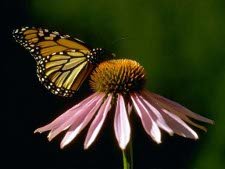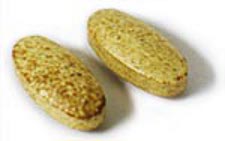Who knew that a flower could be good for you? Well, if the flower is echinacea, it is not only nice to look at and to smell, but it’s good for your health as well! This coneflower is actually one of the most commonly used supplements to assist respiratory function. It is known for shortening the length of a cold and protecting the body from infections as well.
The echinacea flower is characterized by its light purple petals that form a cone shape under its center. The center of the flower is often raised and forms a cone as well, hence the classification as a coneflower. It blooms all summer and helps to add color to gardens. This coneflower is hardy and hard to kill, making it an ideal flower for new gardeners and health herb growers alike.
Properties of the Echinacea Flower

The echinacea flower is loaded with healthy-for-you flavonoid antioxidants. These flavonoids help to prevent the premature aging and destruction of cells due to poor diet and exposure to chemicals. The antioxidants are thought to prevent cancer and renew cell growth. These processes help people to live longer and healthier lives.
The Germans also found that the echinacea flower contained necessary minerals. These minerals are required by the body for proper functioning and are best taken orally through food.
Echinacea flower contains copper, iron, iodine, and potassium. Vitamins A, C and E are also present, making it a very healthy plant to eat. It works as a natural antibiotic and can be used to treat a variety of illnesses including colds and the flu, as well as cuts and insect bites.
Echinacea Flower Effects
Echinacea assists the body by activating the T-cells that belong to the immune system. This allows the immune system to react more efficiently to viruses and contaminants it may come in contact with. This process also helps to shorten sick times and decreases the symptoms a person feels.
Because of the high levels of flavonoid antioxidants, the flower helps to decrease the chances of the body becoming infected or of cells mutating into cancerous cells. These antioxidants are also responsible for the removal of free radicals that cause the damage to cells. Free radicals are thought to be a primary cause of cancer cases.
Echinacea Is Most Effective Against . . .
There are some illnesses that echinacea seems to be particularly effective in helping the body beat. These include bronchitis, sore throat, an enlarged prostate gland, urinary tract infections, vaginal yeast infections and ear infections.
It is also thought to help the body handle conditions such as eczema, psoriasis, and wounds that are slow to heal. When used topically, it is also known to act as a sunblock working to protect the skin from sun damage.
In Germany, echinacea has been used to treat colds, cold sores and upper respiratory infections, and urinary tract infections. The treatment period there is limited to eight weeks, while America does not have a restriction on time period. When using this supplemental herb, it is important to follow package directions as each vendor has a different method of processing the herb.
Methods of Consumption

Echinacea comes in many different types of capsules and pills that are made from processed the echinacea flower. These pills and capsules contain different amounts of root and above-ground flower parts as determined by each producer. It is important, too, that you look at each producer and brand before deciding on a supplement.
The difference between the strengths of each producer can be significant. If you are using the supplement to assist in defeating a cold, then a higher dosage may be appropriate. If the supplement is for prevention, a lower dosage or a middle of the road dosage is more appropriate.
The echinacea herb can also been made into a tincture. This is the process by which a liquid is formed with the addition of an alcohol. This is ideal for those people who are less likely or able to take a pill or capsule. This method may be flavored and so rendered more palatable.
The pressed flower can offer its juices to be used directly on to the skin. This method of use is most effective on open wounds and as a prevention tactic. A small amount of the flower’s oil can help to prevent sunburn or help to heal an already existing sunburn. It can also help along a slow-healing wound and act as a natural antibiotic.
The final method of consumption is that of tea form, brewed from the dried herb. This tea is made from all parts of the flower and is often an ideal way to take the supplement for preventative measures. A small amount of honey and milk helps to sweeten the tea and make it taste better.
Safety First

While the echinacea flower is considered a safe herb, this does not mean that everyone will have good results using it, or even that it should be used by everyone. While side effects are rare, those who do experience them often complain about stomach ailments, including nausea and diarrhea.
It is also a good idea to skip it if you already have allergic reactions to flowers such as daisy and ragweed, as they as are cousins to echinacea. Women who are pregnant are not advised to take this supplement. There have been no comprehensive tests to indicate that the herb is safe for the baby.
People who have conditions such as cancer are also not advised to take this supplement. This is because there is the potential for the herb to speed up cell production. There is also concern that those people who have immune disorders such as AIDS may find their conditions aggravated by the intake of echinacea.
If you have any doubts about taking echinacea or any other herbal supplement, please discuss the it with your health care provider.